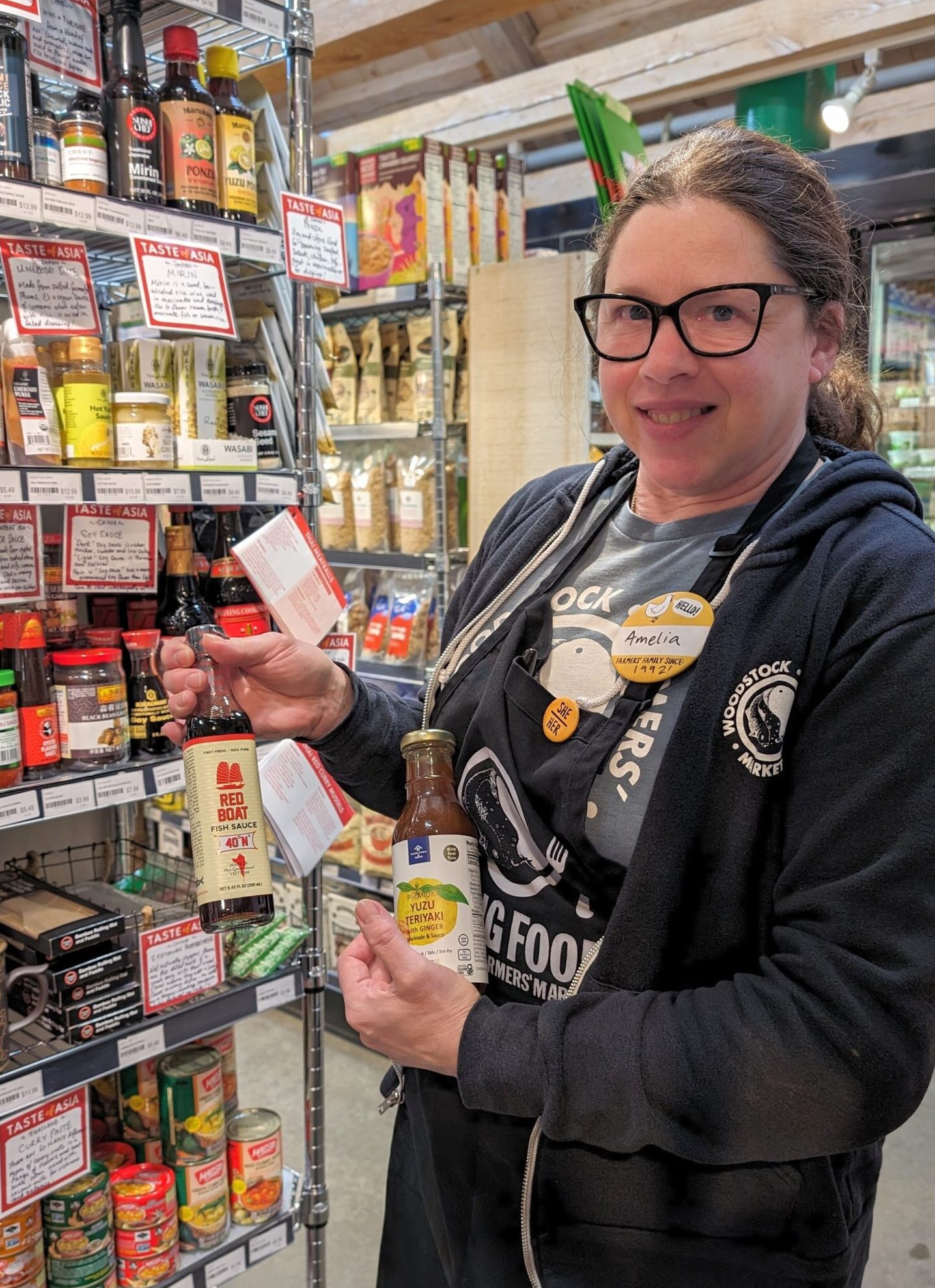We caught up with Amelia, a WFM partner and good food finder, to learn a little more about Taste of Asia at the Woodstock Farmers’ Market. Read on to find out what products we have and if there’s actually a difference between tamari and soy sauce.
Q. What does Taste of Asia mean at the Market?
A. During our annual celebration of Taste of Asia, our goal is to offer all the building blocks of different cuisines. There are so many cuisines from different regions—from South Asia to India to Thailand, but we try to carry key ingredients from each cuisine that you don’t necessarily have on hand all the time. If you have these in your pantry, they last forever. You can rely on them to make everything that you have delicious.
Q. What are some ingredients that the Market is carrying?
A. We have some great Chinese ingredients, including Lee Kum Kee Black Bean and Garlic Sauce, which is fermented and makes dishes really punchy and flavorful, and Pagoda Shaoxing cooking wine, which make recipes taste over-the-top delicious. You may have never heard of these ingredients, but when you try them you might think, “Oh, I love that! That tastes so authentic to me. That tastes like what I think of when I eat Chinese food.”
Same with the Southeast Asian ingredients that we carry, such as Maesri Thai Curry Pastes, Thai Taste Kaffir or Makrut Lime Leaves and lemongrass, and fabulous Red Boat Fish Sauce. All of these ingredients take your good recipes and push them over the top. They make them absolutely delicious.
We have some super fine Japanese condiments, including Marukan Ponzu, which is a citrus and tamari-based sauce. It makes amazing salad dressings and marinades. We have shoyu and traditional toppings for things like rice.
Q. Speaking of tamari and shoyu, what’s the difference between them?
A. I always used them interchangeably, but until recently, I never actually knew what the difference was. It turns out that, traditionally, tamari is wheat-free. It is made with just soy beans; whereas, soy sauce and shoyu are made with a blend of soy beans and wheat. So, it’s good to check the ingredients if you are watching your gluten. But, in terms of having them as a pantry staple, you can use them interchangeably. They taste similar.
Well, there you go, folks. Now you know! If you need more ideas about what to do with some of the ingredients Amelia mentioned, check out this lo mein recipe that uses Shaoxing wine or this Sweet and Spicy Ponzu Chicken Bake recipe or any of our other Taste of Asia recipes on our blog.
See you at the Market!


